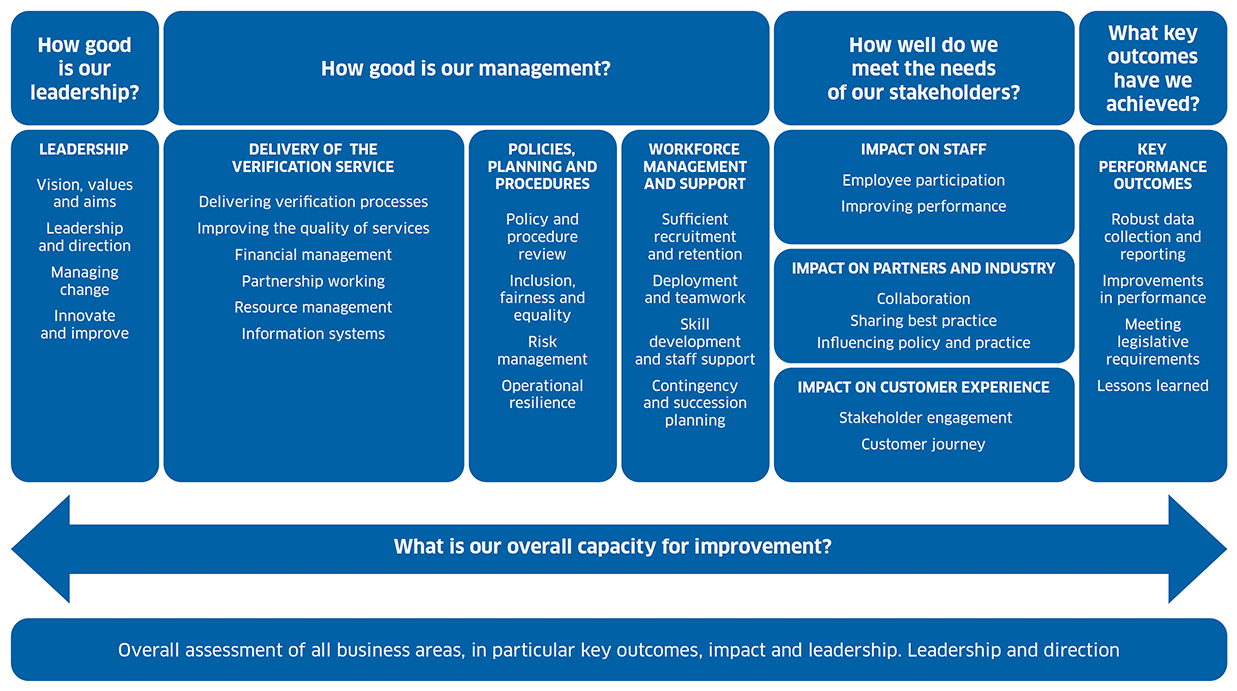Building standards - verifiers: self-assessment tool - April 2021
Self-assessment tool aimed at supporting verifiers in evaluating their approach to continuous improvement to meet their obligations under the Building Standards Operating Framework 2021.
This document is part of a collection
Introduction to using the self-assessment tool
The self-assessment tool is aimed at supporting verifiers in evaluating their approach to continuous improvement to meet their obligations under the Operating Framework for Building Standards Verifiers 2021.
The tool is intended to be a practical resource which requires no formal training or prerequisite knowledge in quality management systems.
The business areas can be assessed individually and in any order. The completed tool and evidence gathered is intended for internal use by the verifier to support their service review and business planning activities. It is intended to help verifiers develop targeted improvement actions which can be summarised in their continuous improvement plans. There is no expectation for the outcome to be submitted to Building Standards Division (BSD) of Scottish Government.
The tool enables verifiers to self-assess their service against eight business areas and take a holistic view of how they set out to resource, deliver, manage and develop their service.
Verifier performance is already assessed against the seven key performance outcomes within the Performance Framework for Verifiers 2021. The results from these performance returns can be used in conjunction with the tool to provide a basis for setting improvement plan actions and developing the verification function.
The eight business areas are listed below.
1. Improvement-focused leadership
2. Delivery of the verification service
3. Policies, planning and procedures
4. Workforce management and support
5. Impact on staff
6. Impact on partners and industry
7. Impact on customer experience
8. Key performance outcomes
This tool has been created based on an evidence search of existing national and international self-assessment methodologies in use across the public sector.
The tool highlights themes for each business area and uses the following key questions to prompt responses.
- How are you doing in respect of this area?
- How do you know this?
- What do you need to do better or differently?

The tool prompts verifiers to provide summary statements within each area to highlight where they perceive their service to be. The summary statements should reflect the following:
- what you aim to achieve
- what you do to achieve results
- how you do it
- how and when you review what you do
- what you do to refine the above and improve outcomes.
It's the responsibility of verifiers to be open and honest in their responses and to collaborate with relevant staff and stakeholders to gain a true reflection of their service.
This will provide opportunities to:
- review what progress has been made and what development and learning has happened
- provide assurance to customers, Ministers and the general public about continuous improvement of the quality of verification services
- highlight areas of good practice for sharing both internally and externally
- highlight areas for improvement and how these should be prioritised.
Verifiers completing the tool are encouraged to use information from different sources to triangulate evidence of the quality of service delivery, for example, direct observation, discussions with staff and customers and comparison against other verifiers. Relevant data from performance returns to BSD and other performance management systems can be used in conjunction with contextual information to build up a clear picture of the service as a whole.
The completed tool should focus on clear outcomes rather than just a list of activities e.g. "the service carries out employee 1 to 1s".
It's more informative to include a description of the impact of changes or improvement activities on the delivery of services or information on how potential impact is being monitored.
e.g. "employee 1 to 1s are carried out annually for 100% of staff and monitored so that training needs can be collated into a unit training plan. This has resulted in key skills in x, y, z being developed across the team. This has had a positive impact on customer satisfaction as demonstrated through our national survey rating improving by 20%".
Contact
Email: buildingstandards@gov.scot
There is a problem
Thanks for your feedback